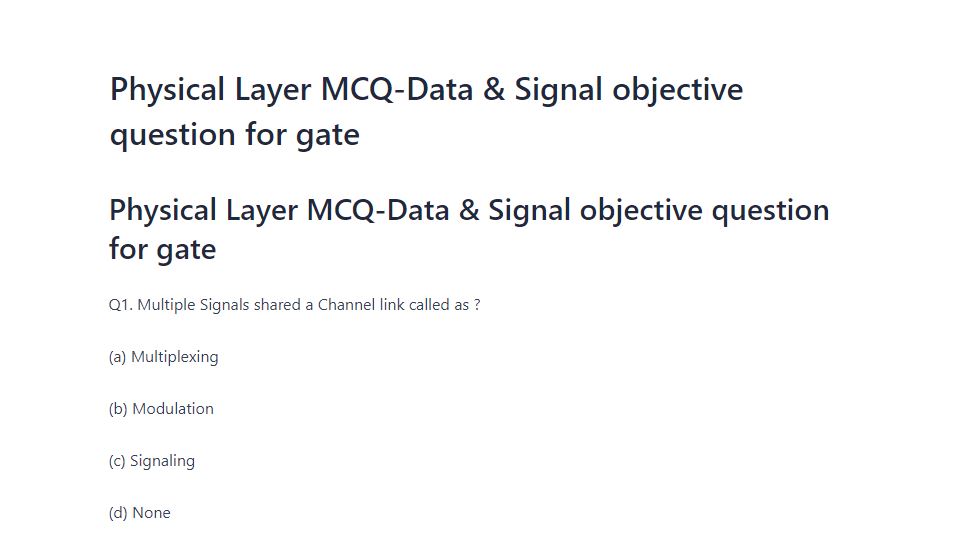Transmission impairment refers to any kind of distortion or interference that affects the quality of a signal while it travels across a transmission medium (like copper wires, fiber optics, or wireless systems). These impairments reduce the performance of communication systems by affecting the clarity, strength, or integrity of the transmitted signal. Impairments can occur due to a variety of factors, such as environmental conditions, physical properties of the medium, or limitations in technology.
Transmission impairments typically degrade the signal, causing errors or loss of data, which might require retransmission or error correction. Understanding these impairments is crucial for designing more efficient and reliable communication systems.
Types of Transmission Impairments:
- Attenuation:
- Definition: Attenuation is the loss of signal strength as the signal travels through a transmission medium. The farther the signal travels, the more attenuation occurs.
- Cause: Resistance in the medium (like copper wires), absorption in fiber optic cables, or free-space path loss in wireless transmission.
- Effect: The signal weakens over distance, leading to poor quality or even the complete loss of the signal.
- Noise:
- Definition: Noise refers to any unwanted or random electrical signals that interfere with the transmitted signal. It is typically unpredictable and can distort or corrupt the transmitted data.
- Types of Noise:
- Thermal Noise (White Noise): Caused by random motion of electrons in conductive materials; increases with temperature.
- Impulse Noise: Short bursts of noise, often due to external sources like electrical equipment.
- Cross-talk: Interference between adjacent transmission lines or channels.
- Effect: Noise can distort or degrade the signal, making it harder for the receiver to decode the transmitted information.
- Distortion:
- Definition: Distortion occurs when the signal’s waveform is altered during transmission. Different frequencies in the signal travel at different speeds or are attenuated differently.
- Cause: Nonlinearities in the transmission medium or equipment.
- Effect: The distortion can cause the signal to change shape, resulting in incorrect data at the receiver end.
- Dispersion:
- Definition: Dispersion is the spreading out of the signal over time, which happens when different frequency components of the signal travel at different speeds.
- Cause: In fiber optics, dispersion can occur due to the differences in the speeds of light for different wavelengths.
- Effect: Dispersion can lead to pulse broadening, where the transmitted signal becomes smeared over time, causing interference between signals.
- Interference:
- Definition: Interference occurs when signals from different sources combine to corrupt the original signal.
- Types of Interference:
- Electromagnetic Interference (EMI): Caused by external electromagnetic fields.
- Radio Frequency Interference (RFI): Interference from other radio-frequency sources.
- Effect: Interference can result in a reduction in signal clarity or even complete loss of data.
- Jitter:
- Definition: Jitter is the variation in the arrival times of data packets in a network.
- Cause: This can happen due to congestion in a network, varying routing paths, or fluctuations in system clock synchronization.
- Effect: Jitter can cause packet loss, delay, or out-of-order delivery of data, especially in real-time communications like VoIP or video calls.
Impact of Transmission Impairments:
- Reduced Data Quality: Transmission impairments can distort or degrade the quality of the data received.
- Increased Errors: Errors caused by noise, attenuation, and distortion require error correction mechanisms, which reduce overall system performance.
- Reduced Throughput: Impairments can lead to reduced throughput (data transfer rate) as a result of retransmissions or reduced signal quality.
- Delays: Impairments such as jitter and distortion can cause delays in data transmission, affecting real-time communication.
- Signal Loss: In extreme cases, impairments like excessive attenuation or interference can cause a complete loss of the signal.
Mitigation of Transmission Impairments:
- Error Detection and Correction: Techniques like parity checking, checksums, and forward error correction (FEC) help detect and correct errors caused by noise and distortion.
- Amplification and Repeaters: In long-distance communication, repeaters can be used to amplify or regenerate the signal, reducing attenuation.
- Shielding: Using shielding and twisted-pair cables can minimize electromagnetic interference.
- Error-free Communication Protocols: Protocols like TCP, which ensure data integrity through retransmission of lost or corrupted packets, are used to combat errors.
- Modulation and Encoding Techniques: Advanced modulation techniques and encoding schemes, such as QAM (Quadrature Amplitude Modulation), can improve signal quality and resilience to noise.
Conclusion:
Transmission impairments are an unavoidable part of any communication system, but understanding and mitigating their effects are essential for ensuring reliable and efficient data transmission. By applying the right technologies and techniques, the impact of impairments can be minimized, improving the overall performance of networks and systems.

